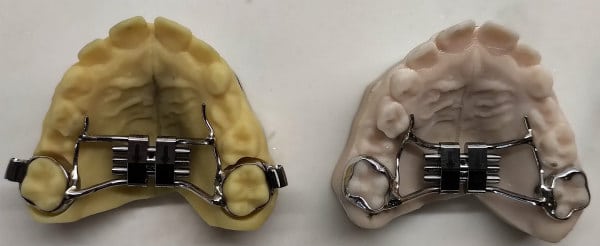3D Printing has revolutionized many of the ways that we provide orthodontic treatment. It is now an integral part of our practice on a daily basis. From Clear Aligner Treatments like Invisalign or Clarity Aligners, and even retainers and palate expanders we no longer use the gooey mold! Replacing traditional impressions with our 3D digital iTero scanner is where it all begins!
Clear Aligner Treatment
This is was the earliest way 3D printing was incorporated into treatment. After an iTero scan, all clear aligners (Invisalign, Clarity and Vivid) are produced from a 3D printed model of the patients teeth. Dr. Doug first uses 3D virtual planning software to design each stage of your treatment. It then goes to the respective lab to 3D print all the stages and produce all the individual aligners. It’s important to realize that while many doctors can provide you with clear aligners, the quality, length and result of the treatment will vary based on the doctor’s skills at planning and detailing each movement of every tooth at the right speed and in the right sequence!
Retainers
All our retainers are produced from a digital iTero scan and a 3D printed model of your teeth. Traditionally, an impression was taken, poured in plaster, then pulled/trimmed and used to produce a single retainer. The plaster model was often destroyed in the retainer making process. Today, the 3D image of a patient’s teeth is stored in “The Cloud” and can be re-printed at any time to produce another retainer! If a retainer is lost or broken, a simple call to the office allows us to have a retainer remade without an office visit! Think of it as smile insurance in the cloud!
Palate Expanders
While palate expanders have been made in our office from a scan and 3D print for some time now, we still had to fit metal bands around the molars. This process often required a separate visit. Separators needed to be placed to allow the metal bands to be fit between the teeth so we could find the patient’s proper tooth size. This process was sometimes uncomfortable for the patient. The bands were then mailed off to the lab to be used for the expander. Today, the iTero scan is all we need! A process called “laser sintering” allows custom metal bands to be designed on the 3D computer image of the teeth and then printed in metal! These laser sintered bands are 100% custom to each patient and NEVER have to be wedged between the teeth on insertion! This allows for a more comfortable insertion of palate expanders. See the difference below between a stock banded appliance on a 3D printed model (left) vs the laser sintered custom banded expander to the right.
